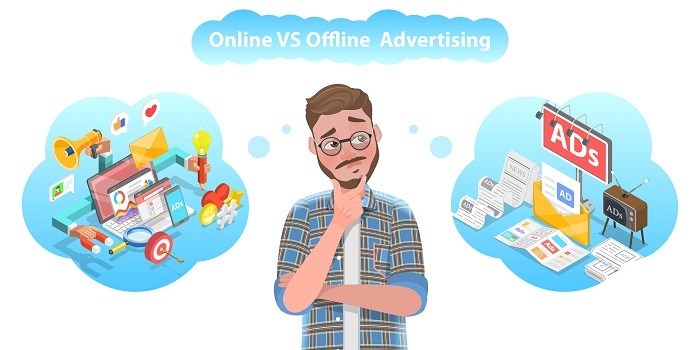
 Data Structure
Data Structure Networking
Networking RDBMS
RDBMS Operating System
Operating System Java
Java MS Excel
MS Excel iOS
iOS HTML
HTML CSS
CSS Android
Android Python
Python C Programming
C Programming C++
C++ C#
C# MongoDB
MongoDB MySQL
MySQL Javascript
Javascript PHP
PHP
- Selected Reading
- UPSC IAS Exams Notes
- Developer's Best Practices
- Questions and Answers
- Effective Resume Writing
- HR Interview Questions
- Computer Glossary
- Who is Who
Understanding Traditional Marketing and its Role in Today\'s Business World
Traditional marketing is the practice of promoting products and solutions via conventional media, which includes newspaper ads, posters, radio, and television advertising, postal mail, and telephone. It is a wide phrase that covers a variety of marketing initiatives that have been utilized to entice consumers for a long time.

Traditional marketing, which aims at reaching a broad audience, is sometimes linked with widespread marketing. Instead of focusing on single people or groups, this kind of marketing seeks to create an argument that will appeal to a wide population.
Traditional marketing methods have already been around for a while and have a track record of successfully reaching massive populations. However, the development of digital marketing in the past few decades has caused a change in how businesses undertake their efforts to advertise.
Despite this change, traditional branding continues to be significant in many businesses, especially the ones that rely significantly on neighborhood or regional advertising. To maximize their advertising spending and reach more consumers, many businesses continue to combine traditional marketing strategies with digital marketing.
How Traditional Marketing is Different from Digital Marketing?
The routes and platforms utilized to attract and communicate with those who are being targeted differ between traditional marketing and digital marketing. The main variations between the two are as follows ?
Channels ? Newspapers, magazines, television and radio, and advertising are just a few of the channels used by traditional marketing to reach consumers. In contrast, digital marketing reaches customers through platforms including email, Facebook and Twitter, Google and other search engines, and mobile applications.
Reach ? When compared to digital marketing, traditional marketing has a smaller range. For instance, only publication subscribers can see a print advertisement in the publication. A social media advertisement, however, may appeal to a wider audience, perhaps even people who don't have access to the brand's profile.
Prices ? Traditional marketing may be higher in price than online advertising. A television commercial, for instance, can cost a few thousand dollars to develop and broadcast. On the flip side, digital marketing initiatives may be carried out for a far lower price.
Evaluation ? When weighed against traditional marketing, digital marketing enables more precise campaign measurement of success. Digital marketers, for instance, may monitor how many clicks, views, and transactions an ad effort produced.
Interactivity ? Digital marketing, as opposed to traditional marketing, provides for greater audience interaction and participation. Social media marketing, for instance, can promote participation by the public via contributions from users or competitions.
Traditional Marketing Role in Today's Business World
In today's business environment, traditional marketing is still crucial, particularly for organizations that cater to elderly consumers or local markets. Among the main advantages of conventional marketing are ?
Tactile and individual ? Compared to digital marketing, traditional marketing strategies like print advertisements, posters, and mailings may be more tactile and individual, enabling companies to get to know their target market on an emotional level that is greater.
Developed audience ? Traditional marketing techniques have been used for years and have a dependable, developed audience. Businesses that cater to older populations, who might be less accustomed to digital marketing platforms, might especially benefit from this.
Local audience aiming ? Using conventional marketing techniques, such as community radio stations or daily newspapers, can be a successful strategy to reach people in the area.
Brand awareness ? Traditional marketing may aid companies in increasing consumer knowledge of their brands. This is especially helpful for newer companies looking to build a presence in an area.
While traditional advertisement may still be a crucial component of a business's overall advertising approach, it is especially effective when utilized combined with electronic techniques. This is true even if digital marketing has grown more and more significant.
Traditional Marketing vs digital marketing

There are multiple significant distinctions between traditional marketing and digital marketing, two separate strategies used to advertise services or products.
Traditional marketing is the practice of promoting products and solutions via conventional media, such as print advertisements, television advertisements, radio spots, posters, and mailings. These marketing strategies are frequently more costly than digital marketing, and it is occasionally hard to gauge how effective they are. Additionally, traditional marketing frequently involves a corporation disseminating its message to a large audience, which is more a single direction in communication.
On the other side, digital marketing applies to the practise of promoting products and solutions via the use of digital channels and platforms including online communities, search engines, email, smartphones, tablets, and websites. Digital marketing is typically more affordable than traditional advertisements and enables more accurate targeting of consumers. Furthermore, digital marketing is far more engaging and promotes interactions between the business and its clients.
In general, digital marketing has grown in importance in the current digital age even if traditional marketing continues to be useful in some situations. Organizations are able to reach a larger audience and interact with clients more deeply thanks to it.
Understanding Traditional Marketing and its Role in Today's Business World
For modern businesses, traditional marketing continues to offer a few benefits such as the ability to target certain age brackets who might not be highly engaged online or who like receiving information through conventional channels. In modern technology, it also has a number of drawbacks ?
Restricted targeting ? Traditional marketing sometimes reaches a broader population, which might make it less efficient than digital marketing in accessing particular target populations.
Cost ? Traditional marketing has a high potential cost, particularly among small enterprises with constrained marketing expenditures. Print advertisements, television commercials, and posters may rapidly become expensive to produce and distribute.
Performance is tough to gauge ? It can be challenging to demonstrate an advertising effort's return on investment (ROI) when evaluating the performance of a typical promotional campaign.
Overall, digital marketing may be more successful and advantageous than conventional marketing for reaching digital organizations' target audiences, however, it may still be beneficial in some situations.
Conclusion
In conclusion, traditional marketing has endured as a cornerstone of business, and it still provides certain benefits for contemporary companies. Various groups of people who may not be as engaged online or who prefer to receive material through traditions can be effectively reached by traditional marketing. However, it has a number of disadvantages in the modern digital environment, including limited interaction, costly, challenging to measure success, and restricted targeting.
Digital marketing must be a part of a company's entire advertising campaign as the world gets increasingly digital in order to reach a wider audience and have more meaningful interactions with clients. With the use of digital marketing, companies may more cheaply and efficiently target certain target demographics.

